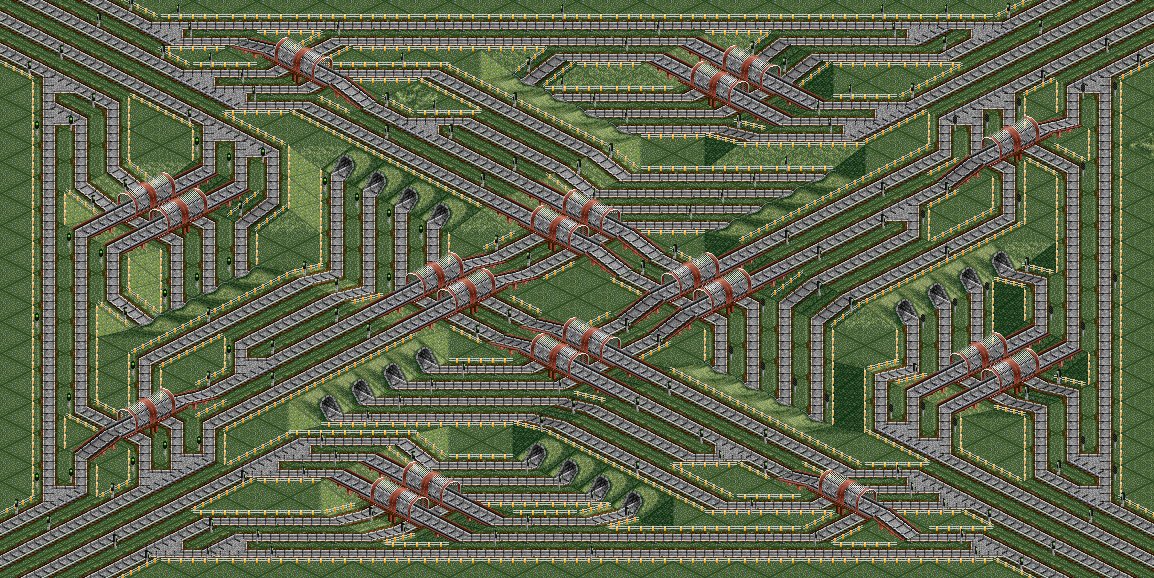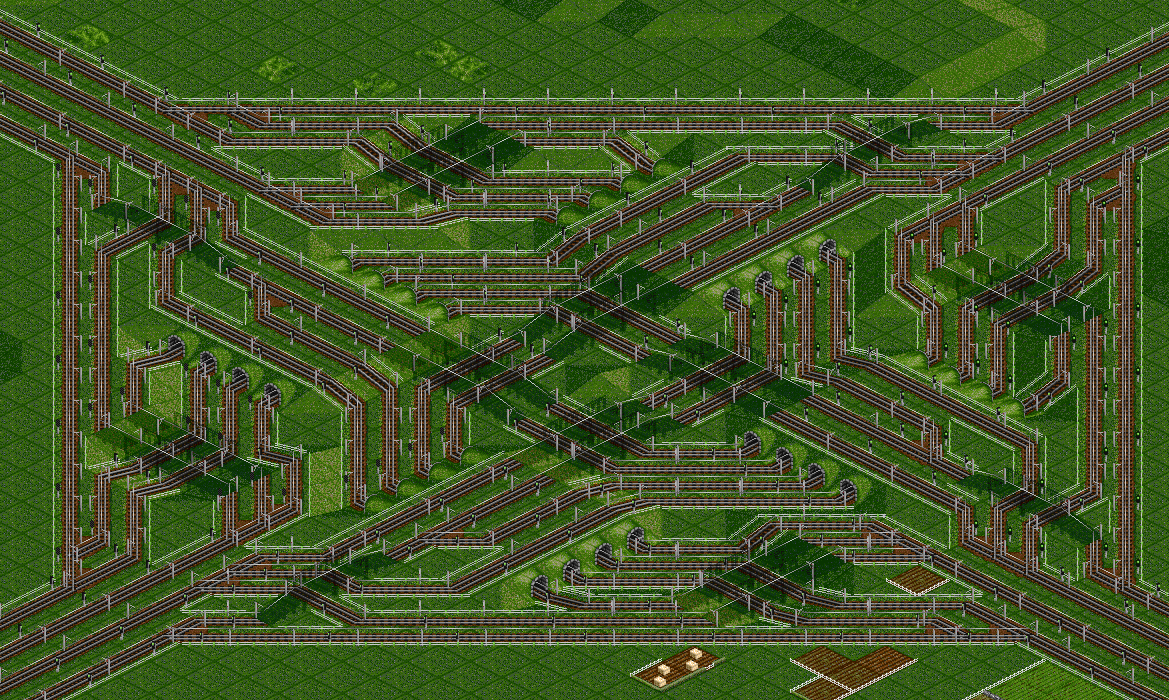-
Basic 3-Way
-
Line Merge
-
Half Cloverleaf
-
Half Spaghetti
-
Compact 3-Way
-
Compact 3-Way B-M Junction
-
Ultimate 3-way
-
Half Transmogrified
-
Braided Junction
-
Basic 4-Way
-
Roundabout
-
Cloverleaf
-
Spaghetti
-
Star
-
Complex Star
-
Branch-Merge
-
Tetrathorp
-
High Speed 4-Way Fly-over∕under
-
Pre-Signaled Roundabout
-
Advanced Roundabout
-
Right-of-way Roundabout
-
Improved Roundabout
-
Transmogrified
-
Tightlong
-
Deepblue2k8 4-way Junction
-
Multi-way/multi-track cloverleaves
-
Dual Tetrathorp
-
Dual Transmogrified
-
Dual Branch-Merge
-
Quad Branch-Merge
-
Quad Tetrathorp
-
6-tuple Branch-Merge
-
8-Way Star
-
High Speed 4-way
Track Layouts Unuseful junctions
The Dual Branch-Merge Junction is a high speed, high traffic junction. It branches at the beginning of the junction and merges right at the end, allowing more trains into the junction at once, thus preventing deadlock; it does not use sharp turns in order to maximize speed; it has a maximum of two slopes per path. Trains heading straight, turning right, or turning left all have dedicated tracks, which help alleviate traffic.
This junction works best with Realistic acceleration and if trains can choose between the inner and outer tracks just before entering the junction.
This junction is built for speed at the cost of space.
Pros:- Handle a large number of trains at a time.
- Traffic jams are unlikely.
- Trains don't have to loop around like they do in a cloverleaf.
- Tracks split before they merge, avoiding traffic problems.
- Trains have to slow down to climb slopes.
- Takes up a huge amount of space.
- Very complex and costly to build.









